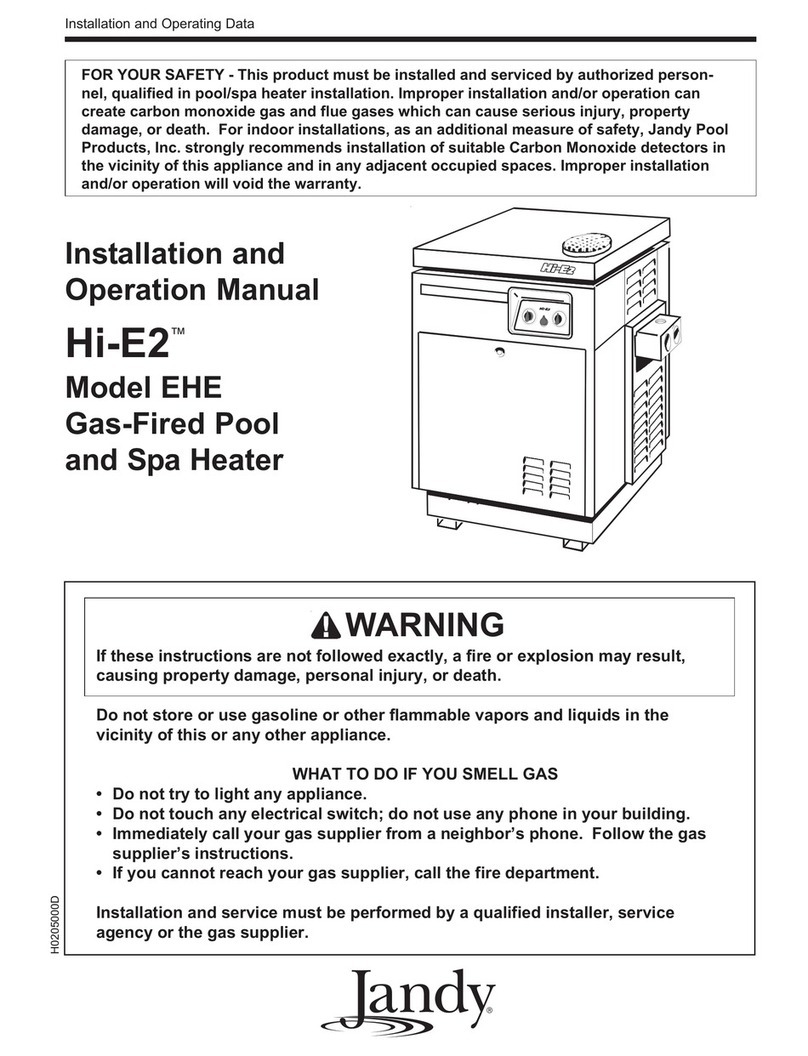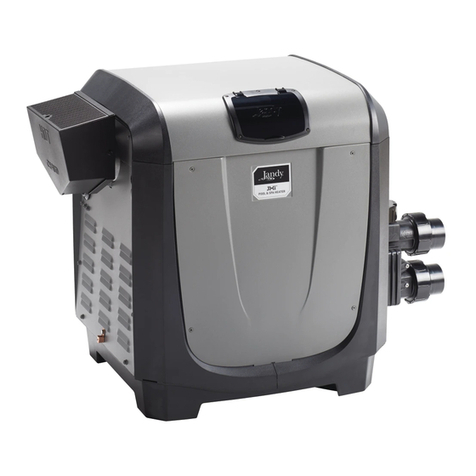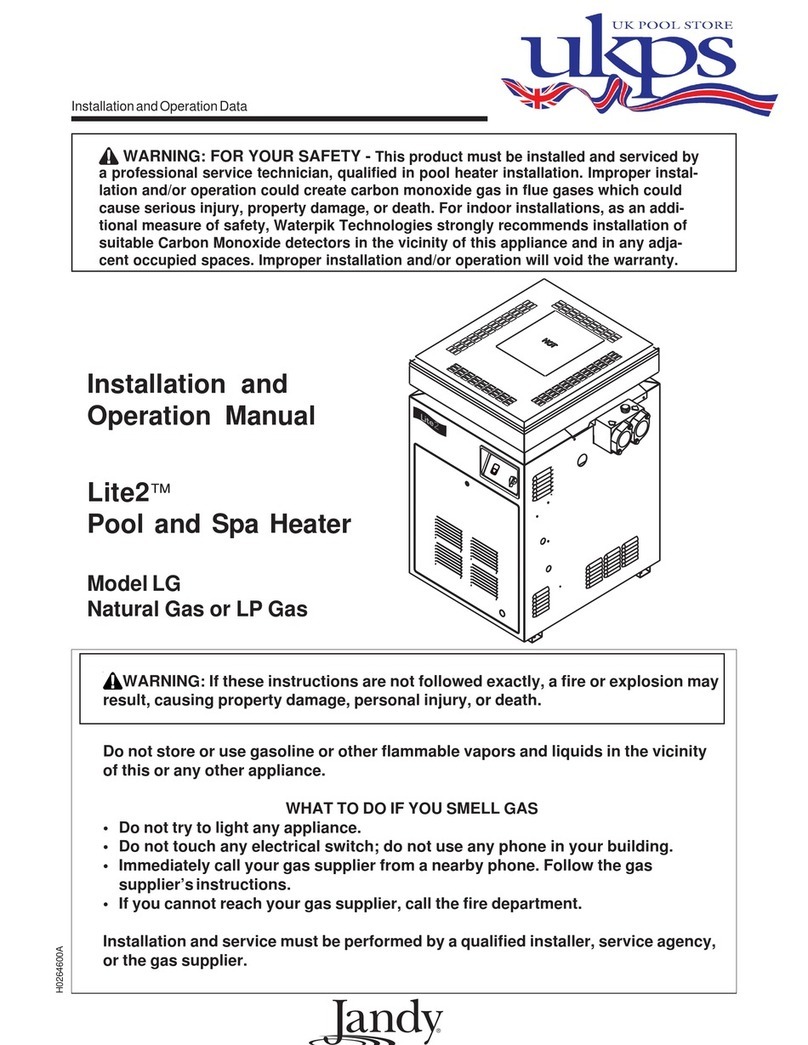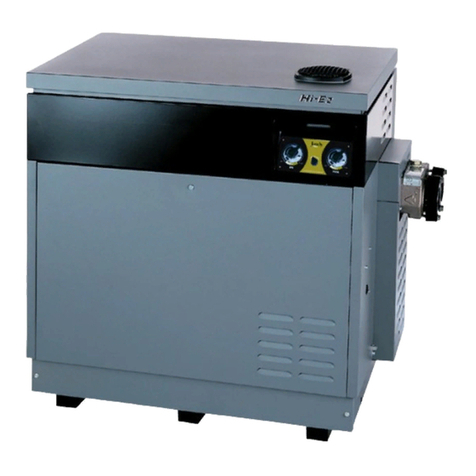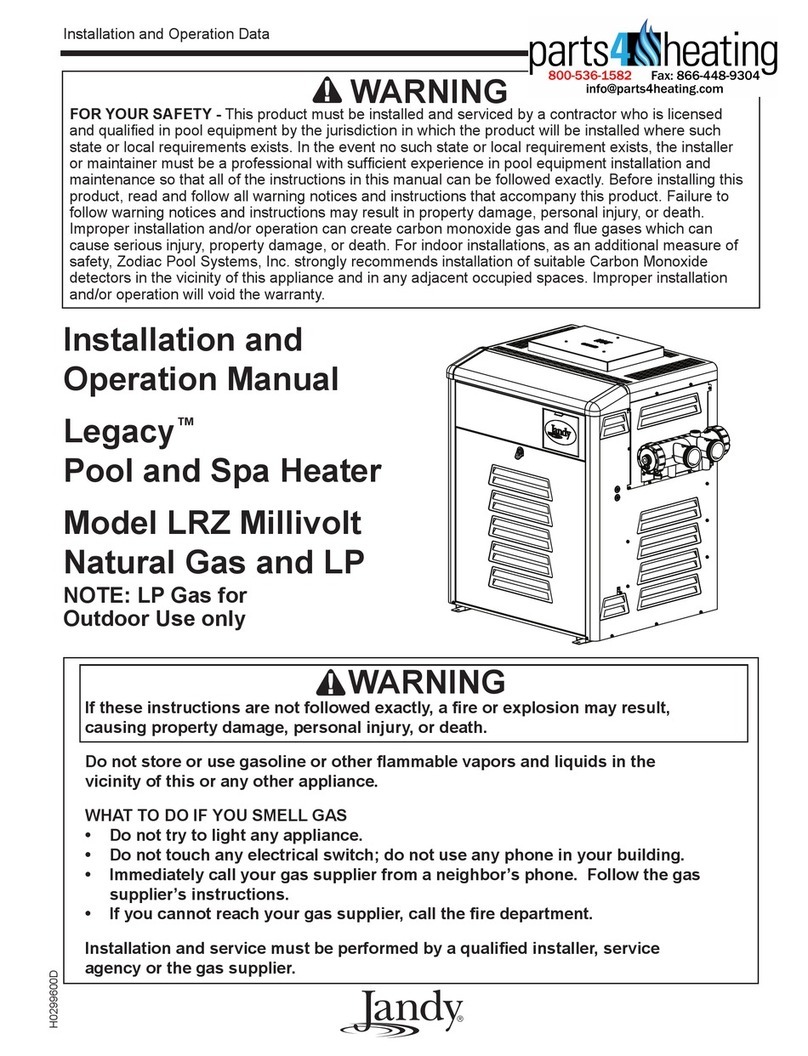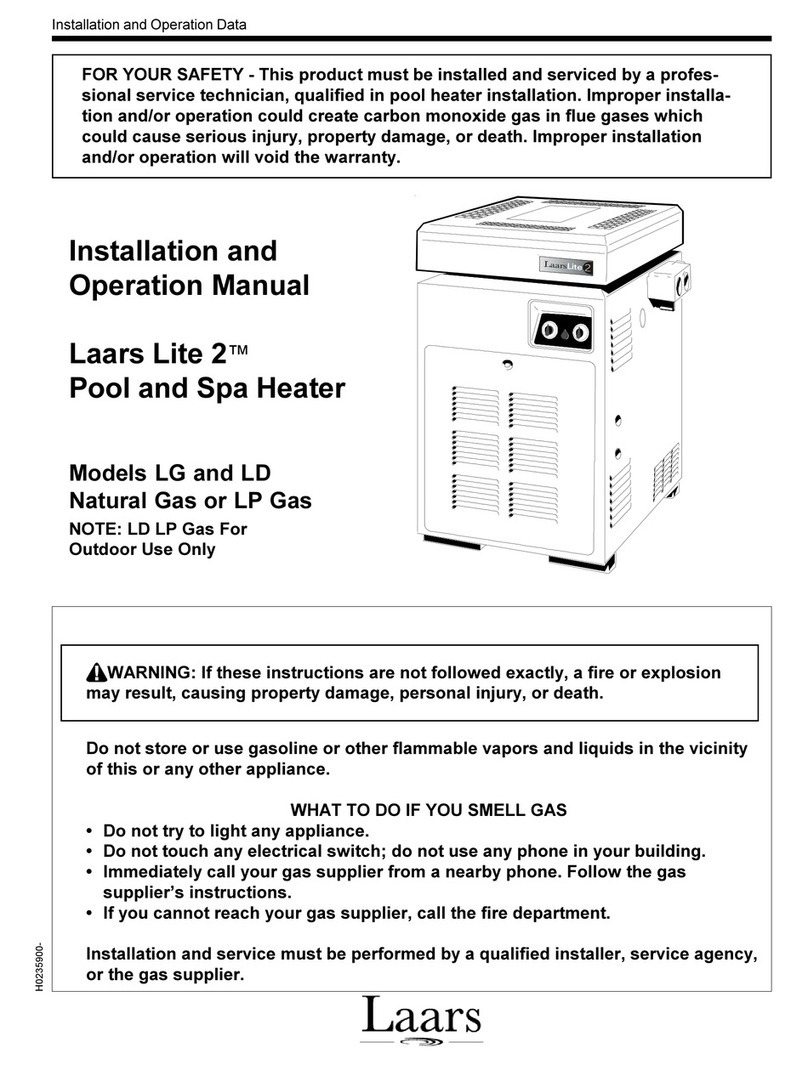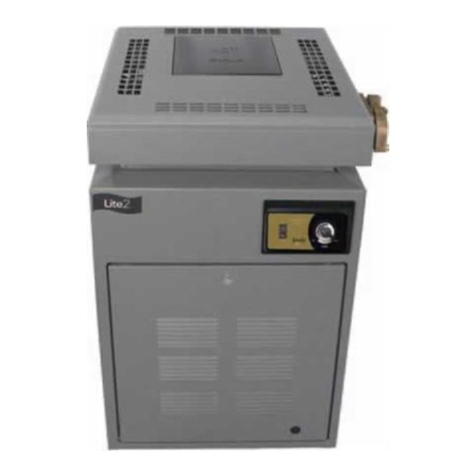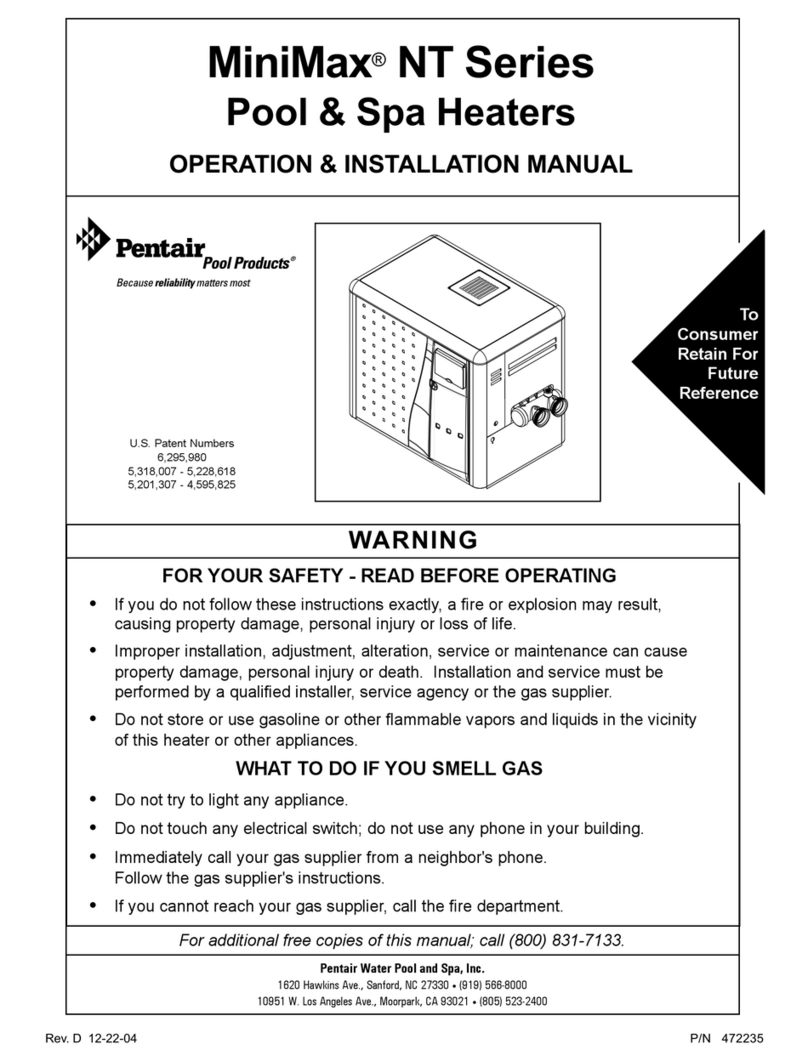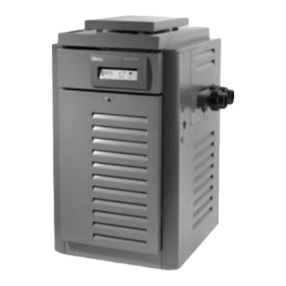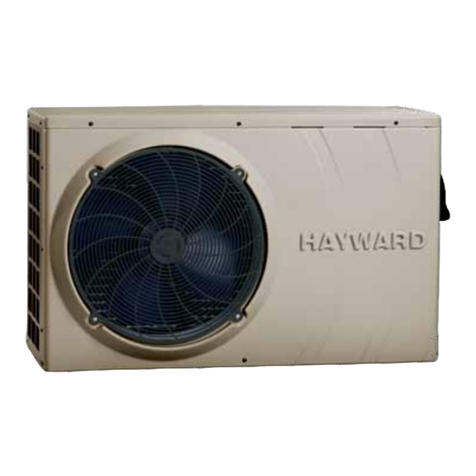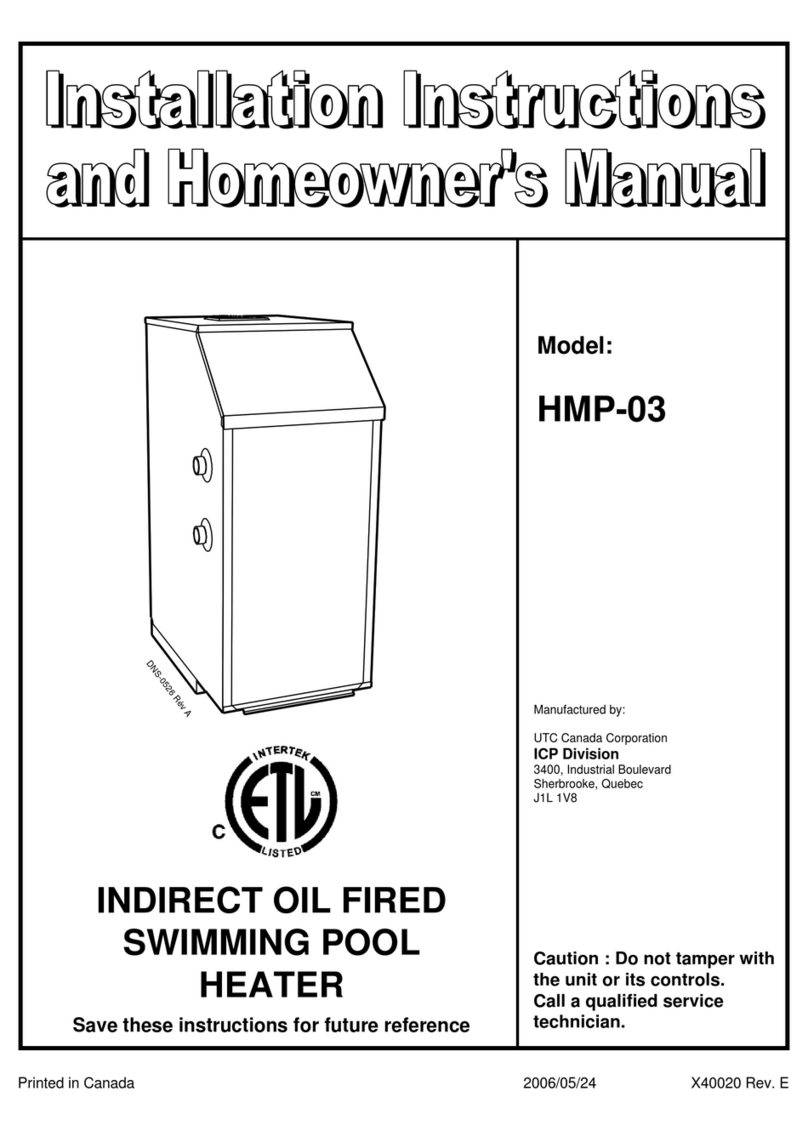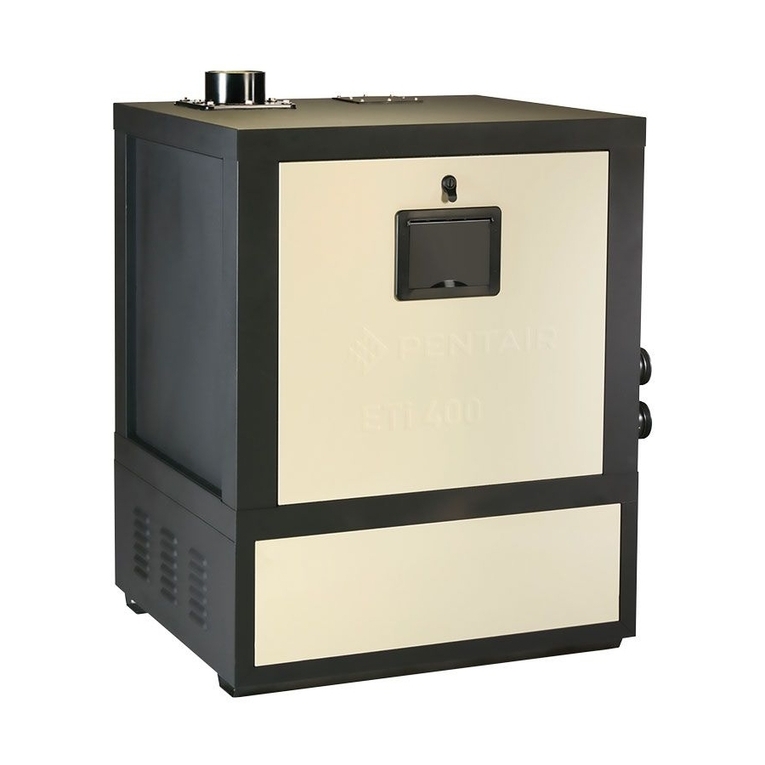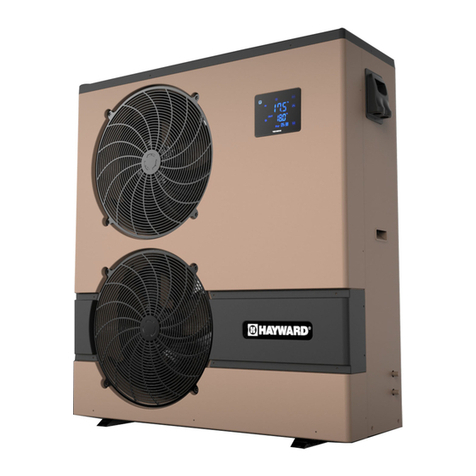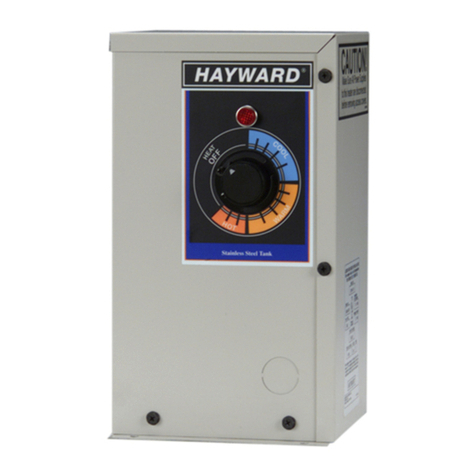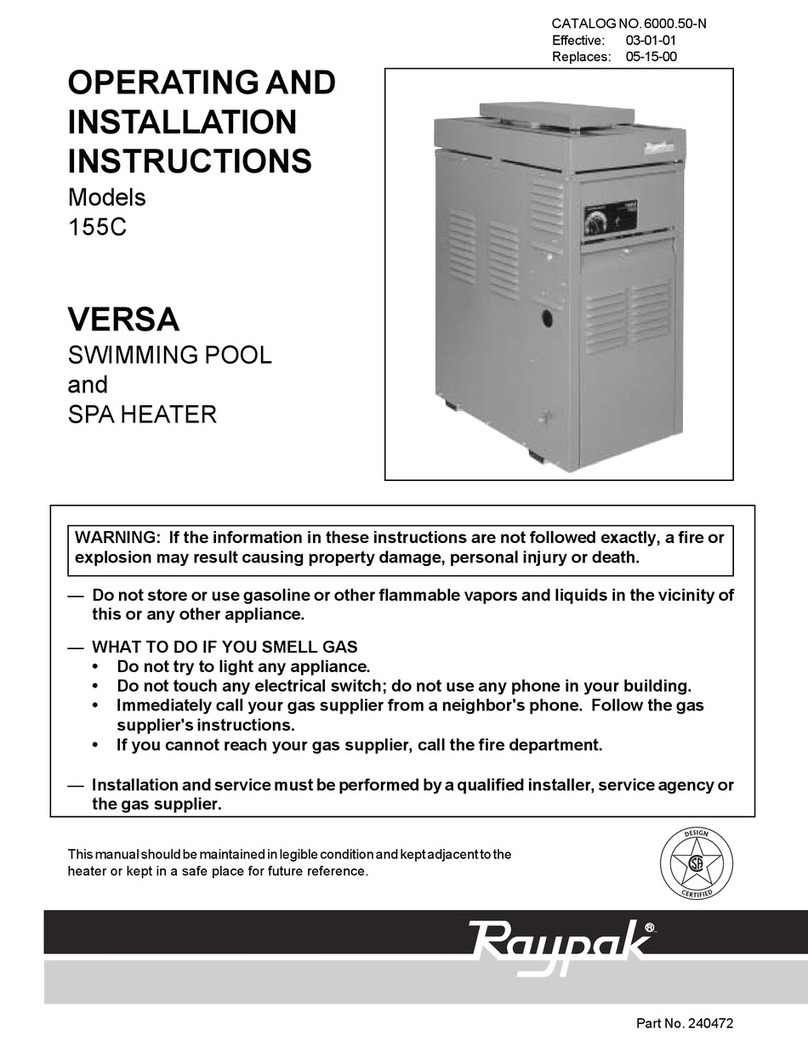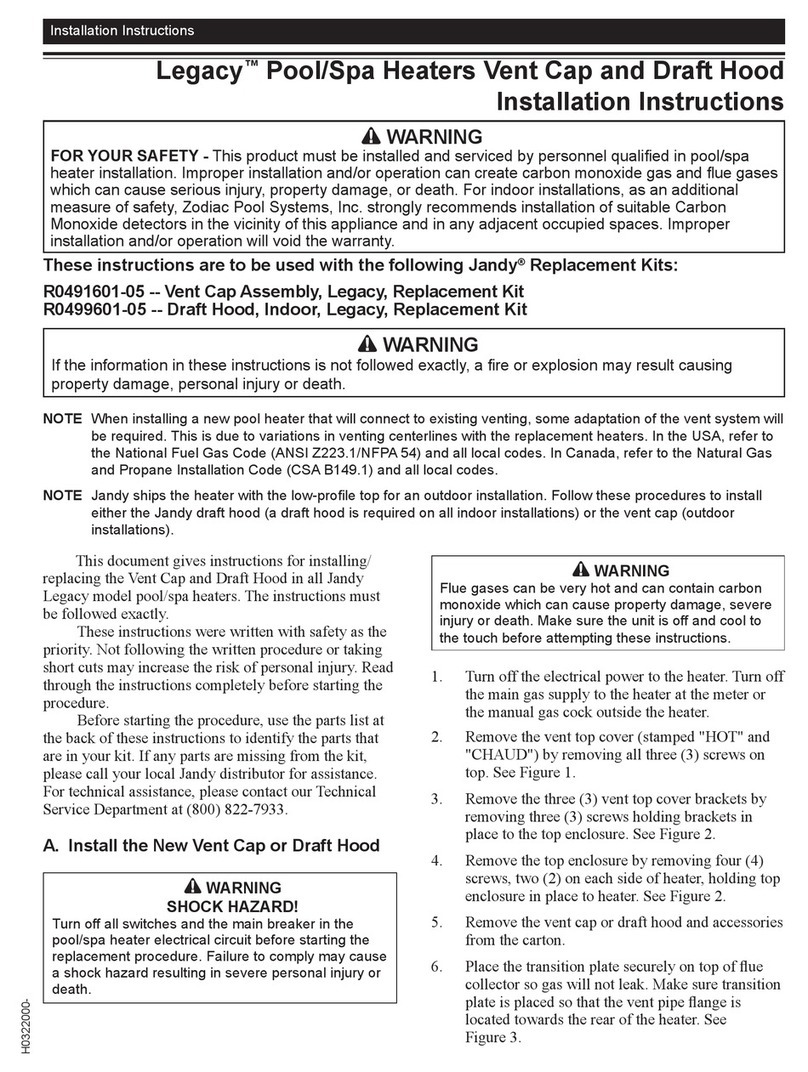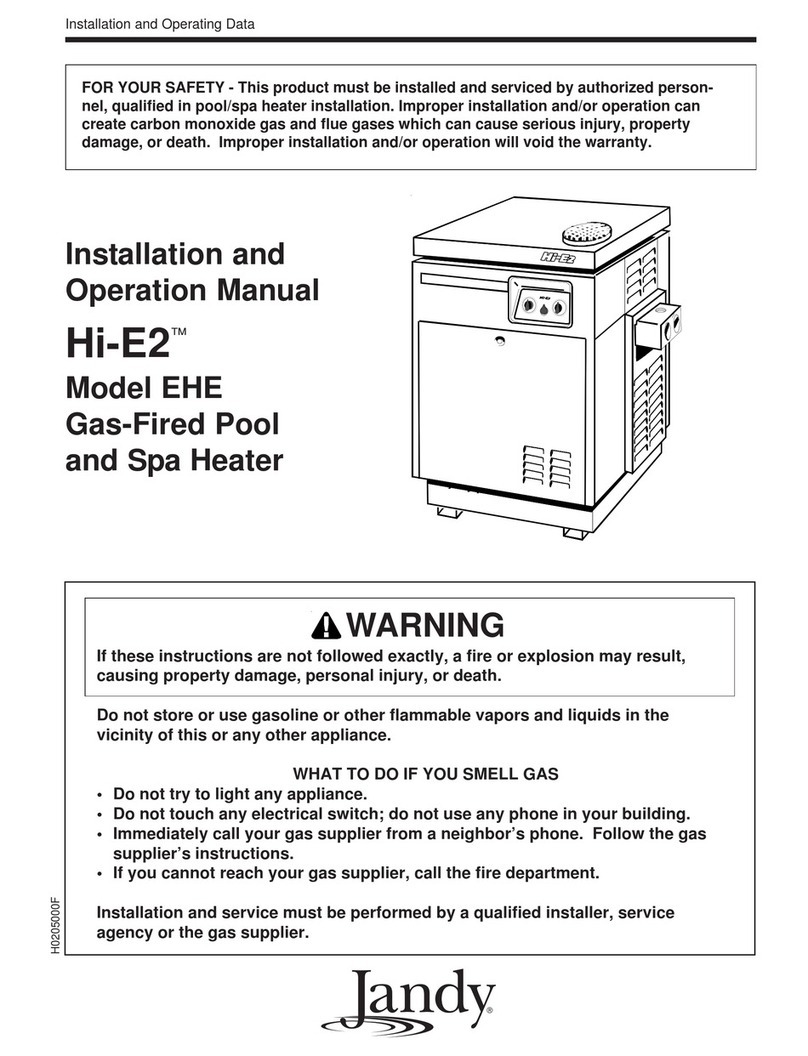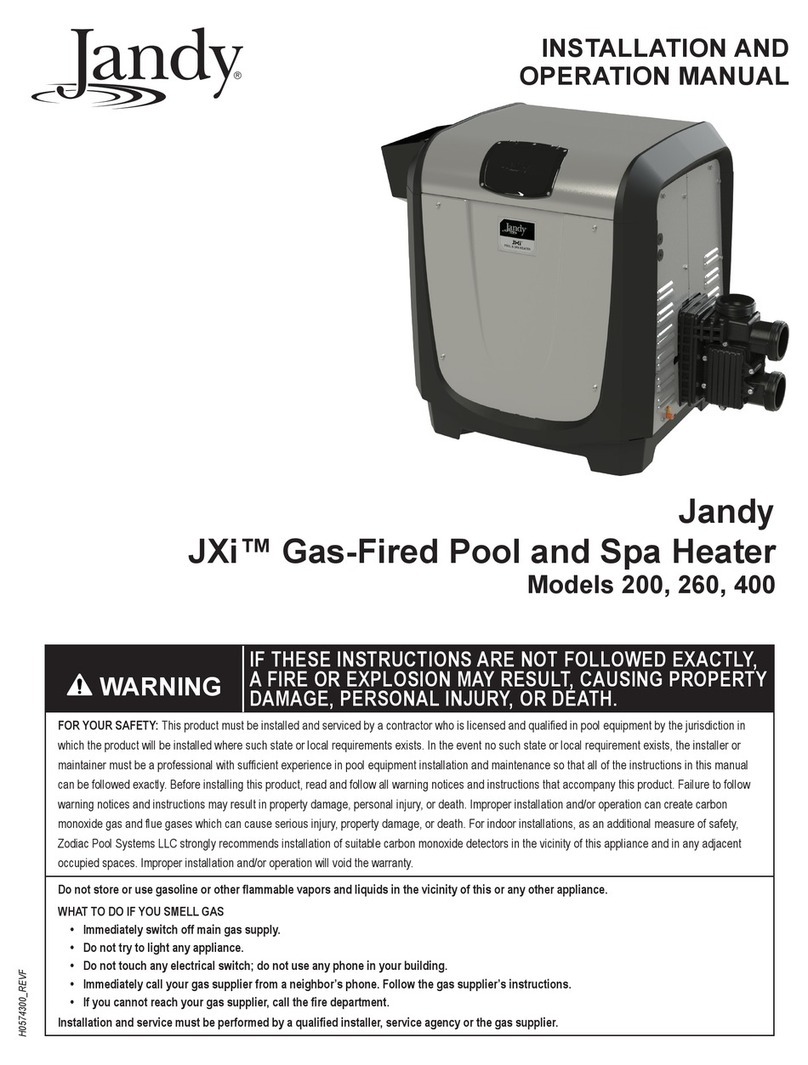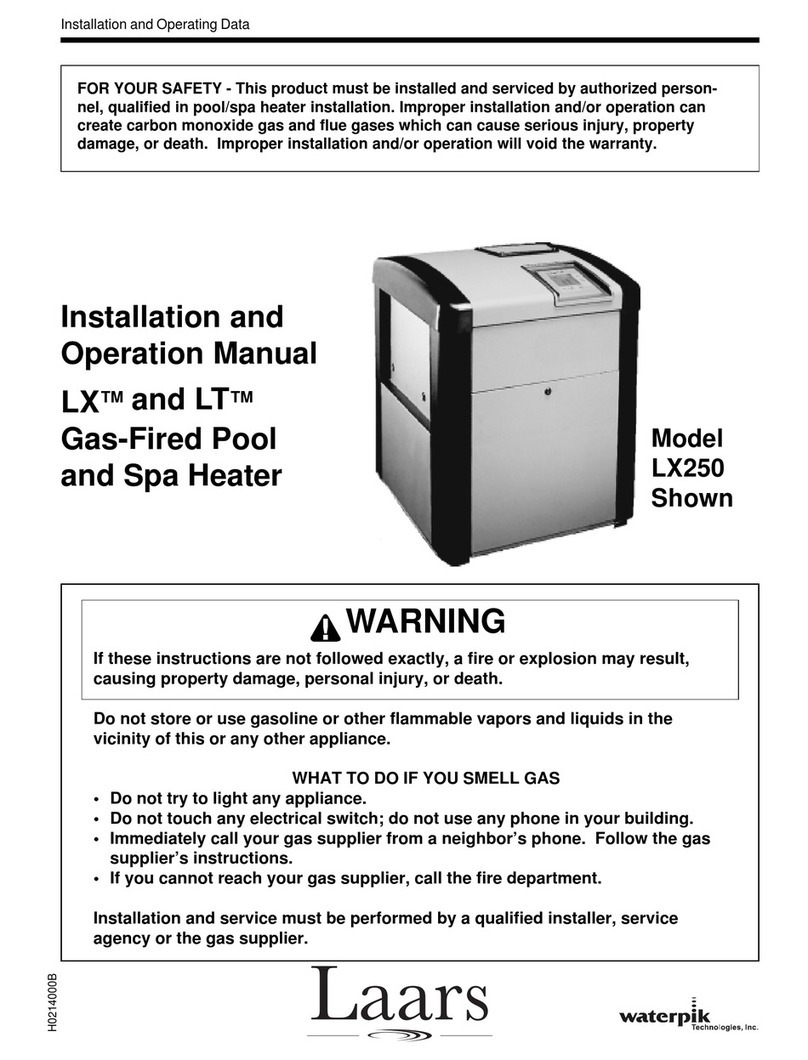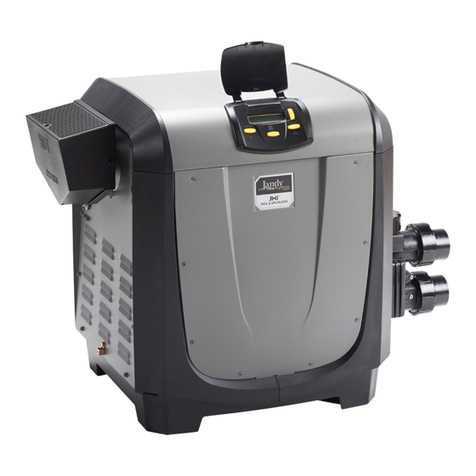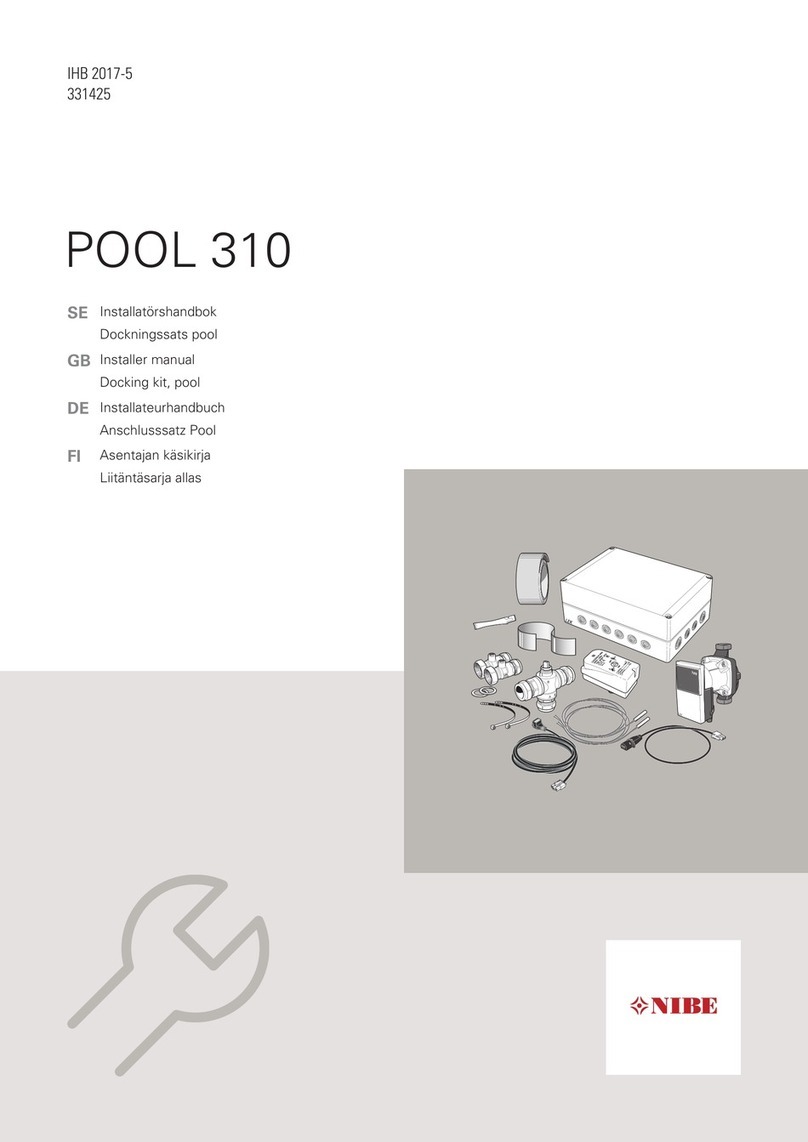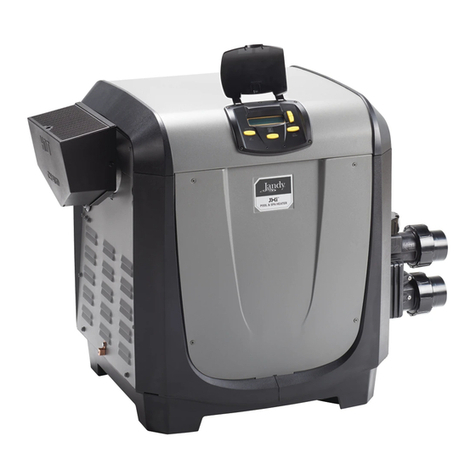
Page2
• Lack of awareness of impending hazard
• Failure to perceive heat
• Failure to recognize need to leave spa
• Physicalinability toleave spa
• Fetal damage in pregnant women
• Unconsciousness resulting in a danger of
drowning
1.2.2 Swimming Pool Energy Saving Tips
Jandy Pool Products, Inc. offers the following
recommendations to help conserve fuel and minimize
the cost of operating your pool heater without sacri-
ficingcomfort.
1. The American Red Cross recommends a maxi-
mum water temperature of 78°F (25°C). Use an
accurate pool thermometer. A difference of 4F°
(2C°) , between 78°F and 82°F (26°C and 28°C),
will use as much as 40% more gas.
2. Carefully monitor the water temperature of your
pool in the summertime. You can reduce heater
usage due to warmer air temperatures.
3. Find the proper setting on the pool heater tem-
perature control and use the Keypad Lock
function to discourage further adjustments.
4. Set the pump time clock to start the pump no
earlier than 6:00 AM during the pool heating
season. This is the time when nightly heat loss
balances.
5. If the pool is only going to be used on weekends,
reduce the heater temperature control setting by
8 or 10 degrees during the week. Reset it to the
78°F (25°C) level a day or so before you plan to
use the pool.
6. During the winter or when on vacation for longer
than a week, shut down the heater by following
the shutdown instructions found on the inside of
the heater.
7. Where possible, shelter the pool from prevailing
winds with well-trimmed hedges or other land-
scaping, cabanas, or fencing.
8. Always use a pool cover when practical. Besides
providing a valuable safety feature, a pool cover
will reduce heat loss, conserve chemicals, and
reduce the load on filter systems.
1.3 Warranty
The Lite2 heater is sold with a limited factory
warranty. Details are specified on the back cover of
thismanual.
Make all warranty claims to an authorized Jandy
representative or directly to the factory. Claims must
include the heater serial number and model (this
information can be found on the rating plate), installa-
tion date, and name of the installer. Shipping costs are
not included in the warranty coverage.
The warranty does not cover damage caused by
improperassembly,installation,operationorfield
modification. Also, damage to the heat exchanger by
corrosive water is NOT covered by the warranty. See
Section 8.1 for maintaining proper pool water chemis-
try.
NOTE: Keep this manual in a safe place for
future reference when inspecting or servicing
the heater.
1.4 Codes and Standards
The Lite2 pool and spa heater is design certified
by CSA (Canadian Standards Association) as comply-
ing with the latest edition of the "Standard for Gas
Fired Pool Heaters", ANSI Z21.56 in the USA and
CSA-4.7 in Canada.
All Jandy heaters must be installed in accordance
with the local building and installation codes as per the
utilityorauthoritieshavingjurisdiction.Alllocalcodes
take precedence over national codes.
In the absence of local codes, refer to the latest
editionofthefollowingnationalcodesforinstallation:
1. In the United States, "The National Fuel and Gas
Code", ANSI Z223.1. Pay special attention to the
Chaptercovering,"VentingofEquipment".
2. In Canada, "Natural Gas and Propane Installation
Code", CAN/CSA-B149.1.
Any changes to the heater, gas controls, gas
orifices, wiring, draft hood, vent cap, or improper
installation may void the warranty. If change is
required to any of the above, consult the factory.
1.5 Technical Assistance
Consult Jandy Pool Products, Inc. or your local
Jandy distributor with any questions or problems
involvingthespecifications,installation,andoperation
of your Jandy equipment. An experienced technical
support staff is ready to assist you in assuring the
proper performance and application of Jandy products.
For technical support call the Jandy Products Techni-
cal Service Department at (707) 776-8200 extension
260.
